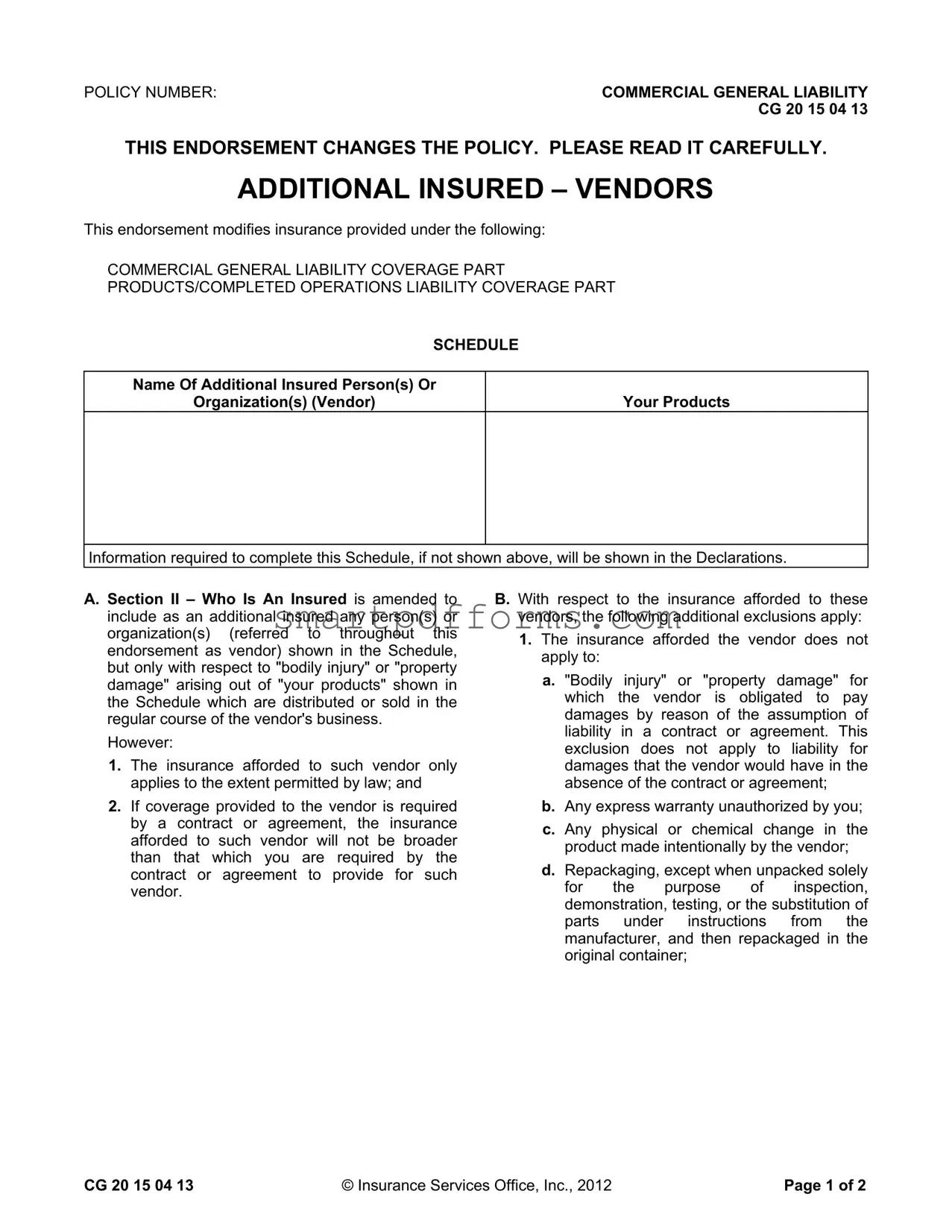The Additional Insured Vendors form, designated as CG 20 15 04 13, signifies a critical amendment to the Commercial General Liability policies, especially affecting coverage related to products and completed operations. By extending coverage to specified vendors, this endorsement allows vendors to be protected under the policyholder's commercial general liability coverage, specifically for issues arising from the distribution or sale of the policyholder’s products. It is tailored to cover bodily injury or property damage that may arise from such products, subject to significant limitations and exclusions. Notably, the coverage is only as broad as legally permitted or as narrowly required by any contractual agreement between the vendor and the policyholder. Moreover, the endorsement outlines specific situations where the vendor's protection does not apply, such as when the vendor has altered the product or is found solely at fault for damages due to negligence. Additionally, the form stipulates that the insurance will not exceed limits laid out by a contractual agreement or the policy itself, declaring unequivocally that the vendor's inclusion as an additional insured does not extend the policy's overall coverage limits. Comprehending the intricacies of this form is essential for vendors and policyholders alike, ensuring both parties understand the scope, limitations, and the operational impacts of this coverage on their business relations and liability exposures.

